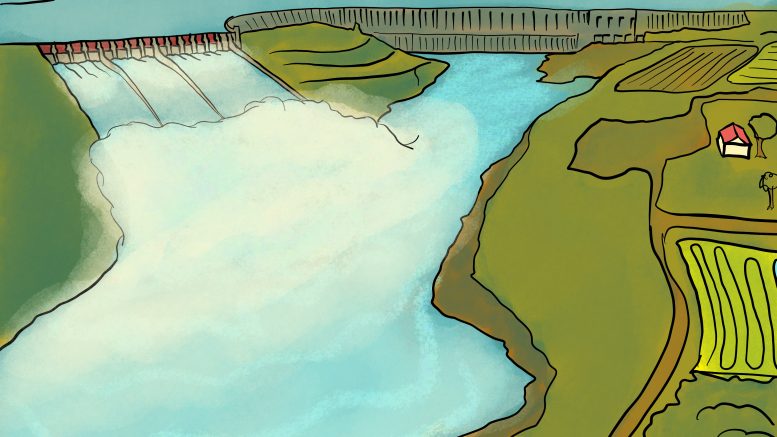Flooding in Manitoba can cause hundreds of millions of dollars’ worth of damage.
In some cases, whole roads need to be rebuilt or repaired as a result of floods. The destruction of infrastructure also costs the province a great deal of financial resources.
U of M associate professor of civil engineering Masoud Asadzadeh pointed out that some of the effects of flooding cannot be tangibly measured by financial cost.
“Assume that someone loses their home, their only accommodation because of a flood,” he said. “Is it possible to measure that in terms of monetary cost to the system? Probably yes, but for that family who lost their accommodation, that’s not going to be convertible to money.”
Asadzadeh’s research focuses on simulating flood mitigation strategies in order to inform the provincial government’s decision making regarding floods.
The simulator can take data and replicate the conditions from past floods. If the events in the simulator match what actually happened in the past, then the model is considered effective for predicting future floods.
Asadzadeh’s most recent research focused primarily on road washout, a common effect of flooding. Road washout occurs when the overflow of water during a flood is enough to erode the road and disrupt transportation.
Asadzadeh’s research investigated whether adding temporary reservoirs for flood water — called retention dams — would have any effect on road washout.
His team chose a particular sub-catchment of the Assiniboine River to model. A “catchment” refers to an area surrounded by natural features where water drains toward one point to form creeks or rivers, and can consist of many smaller sub-catchments.
One scenario that Asadzadeh simulated involved the use of 20 retention dams. After the simulation, Asadzadeh’s team concluded that 20 retention dams would not be enough to completely eliminate the risk of washout. However, the presence of the dams did decrease the washout risk.
As a result of this simulation, the team concluded that the best way forward would be to place the dams in more strategic locations where the risk of washout was the highest.
Asadzadeh said that, in some cases, it might be more efficient to simply reroute the highest risk roads so that less intervention is required.
Analysis showed that as few as five retention dams placed at the key locations would be enough to completely erase the risk of road washout. However, a downside of this is that bodies of water upstream would be holding an excess amount of water. That water might end up flooding an agricultural area in order to protect the road.
If managed properly, it is actually possible for the flooding season to help rather than hurt agriculture. In the years where the impact of flooding is not severe, the excess water during the flooding season can be used by farmers.
Asadzadeh expects that his simulation tool could be adapted to simulate droughts as well. Unlike flooding, which occurs during a relatively short period, a drought normally lasts for a longer period of time.
Manitoba is distinguished from other parts of the world in that it has sufficient water entering the system. The province does not have the infrastructure to properly store that incoming water for other purposes.
However, Asadzadeh believes that this situation is still more advantageous than chronic drought.
“Managing that water is a big challenge, but it’s better than not having any water,” Asadzadeh suggested.
Another issue that has an impact on water resource management is climate change. Since the Manitoba flooding season generally occurs during the time when the winter snow melts, rising global temperatures might push that time to earlier months.
The ability to simulate flood conditions accurately is important for calculating the future effects of climate change on Manitoba’s water system.
Despite the challenges, Asadzadeh views his work as a creative endeavor that brings together multiple moving parts to form a coherent solution.
“I see these optimization problems as games or puzzles that we want to solve,” Asadzadeh said.
“There are all those pieces of [a] puzzle, we just need to put them together so that it looks good, which means that it works [optimally].”


